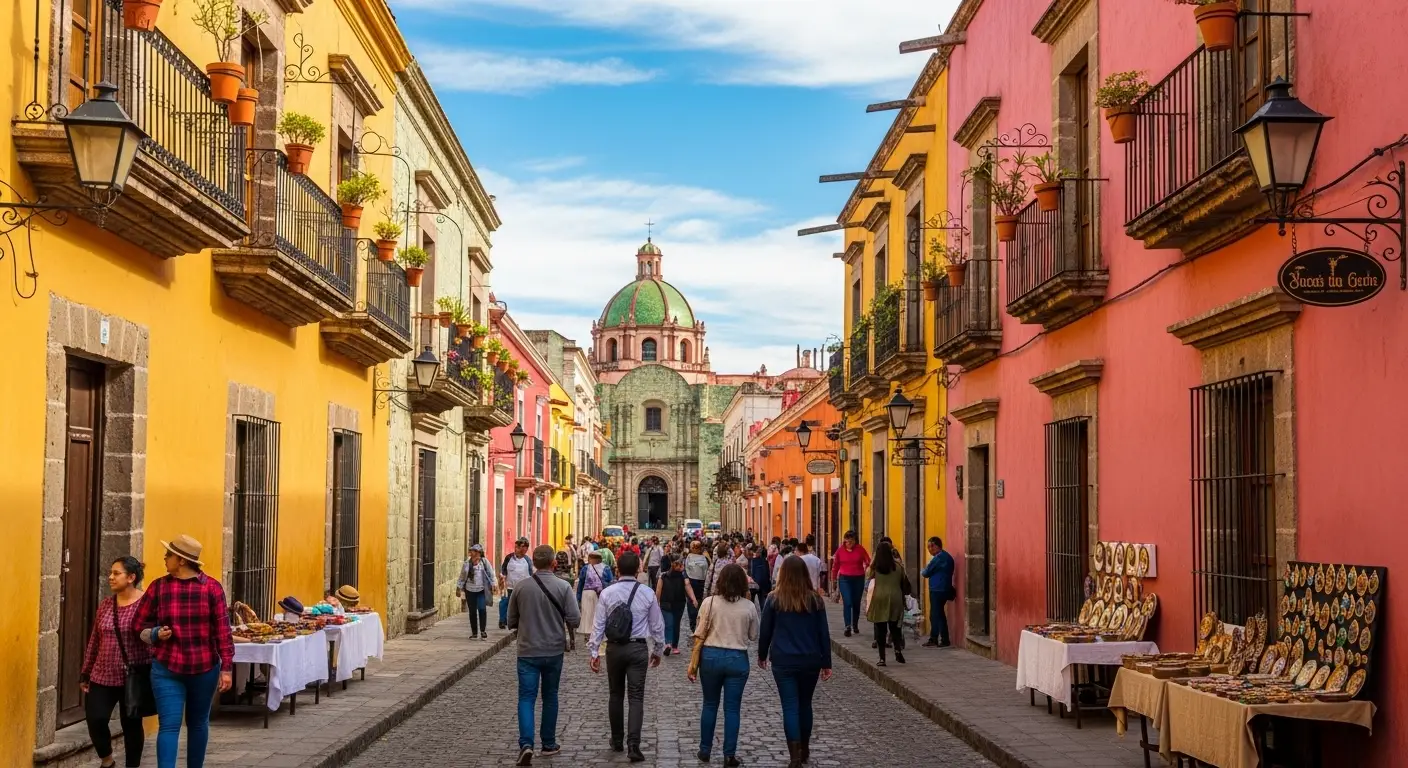Planning a trip to Oaxaca? You’re probably wondering when to go to Oaxaca. I’ve been there multiple times, and trust me—timing really matters for Oaxaca travel.
The city of Oaxaca sits at 5,000 feet in southern Mexico. That elevation creates a totally different climate than beach towns like Cancun. This UNESCO World Heritage site mixes indigenous traditions with colonial architecture, world-class food, and nearby ruins. But pick the wrong month? You might deal with crowds, rain, or sky-high prices.
Let me walk you through exactly when the best time to visit Oaxaca Mexico is based on what matters most to you.
The Quick Answer: April-May and October Are Best
Here’s the bottom line: The best time to visit Oaxaca is April through May or October.
These shoulder months give you the perfect balance. Pleasant weather, reasonable crowds, and prices that won’t destroy your budget.
The months of April and May bring dry weather with temps in the upper 70s to low 80s. The winter tourists have left. You can actually get a table at restaurants. Monte Albán isn’t packed with tour groups.
October has different magic. The rainy season winds down. The whole city buzzes with Day of the Dead celebrations preparation—altars going up, marigolds everywhere, sugar skulls in every shop.
One key tip: Visit during the first three weeks of October. You get all the cultural richness without the actual festival chaos.
Book 2-3 months ahead for these months, especially October.
Best Things To Do In Puerto Escondido Oaxaca
Oaxaca City vs Beach Weather: They’re Completely Different
This confused me at first, so let me clear it up.
Oaxaca isn’t one climate. The highland city and coastal beaches run on totally different weather patterns.
The City Stays Moderate Year-Round
Oaxaca de Juarez sits in mountain valleys. The elevation keeps temps comfortable all year. Summer brings afternoon showers—not all-day rain. Winter gives you crisp, sunny days perfect for wandering cobblestone streets.
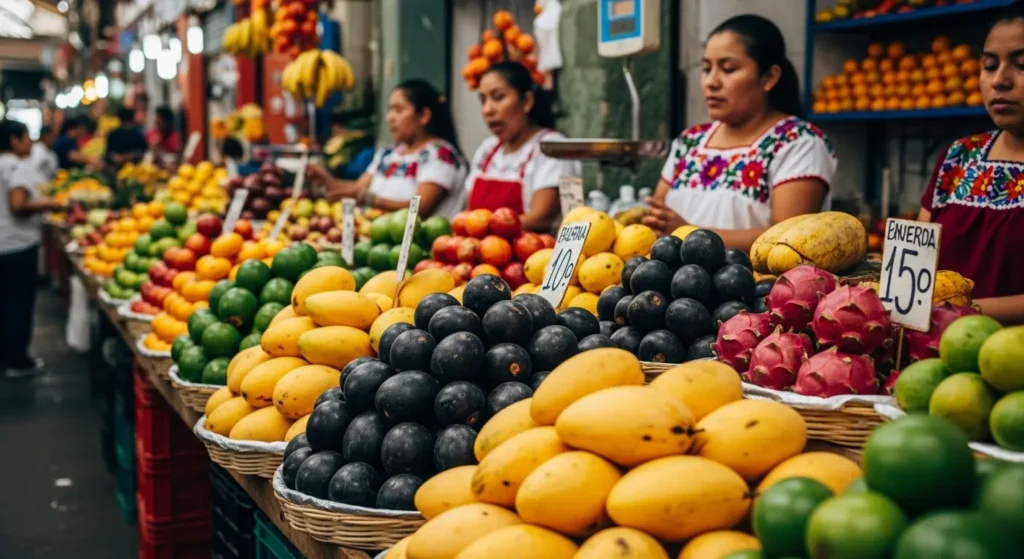
But nights? They get surprisingly cool. I’ve needed a jacket every December through February evening.
The Beaches Are Hot and Humid
Puerto Escondido and Huatulco bake at sea level. Temps rarely drop below 75°F, even in “winter.” The rainy season hits harder here—more intense storms, muggier conditions.
The ocean though? Always warm for swimming.
Most travelers do 4-5 days in the city, then 3-4 days at the coast. That split works great regardless of season.
Understanding Oaxaca’s Tourist Seasons
Let me break down what each season actually means for your trip.
High Season (November-March): Perfect Weather, Maximum Crowds
The period from November to March constitutes high season. It delivers guaranteed sunshine and comfortable temps. Clear skies all day. You can plan outdoor activities without worrying about weather.
The catch? Hotels book months ahead. Restaurants need reservations. Hotel rates jump 40-60% compared to low season. Archaeological sites fill with tour groups. The Benito Juarez market becomes shoulder-to-shoulder. Even street food vendors have lines.
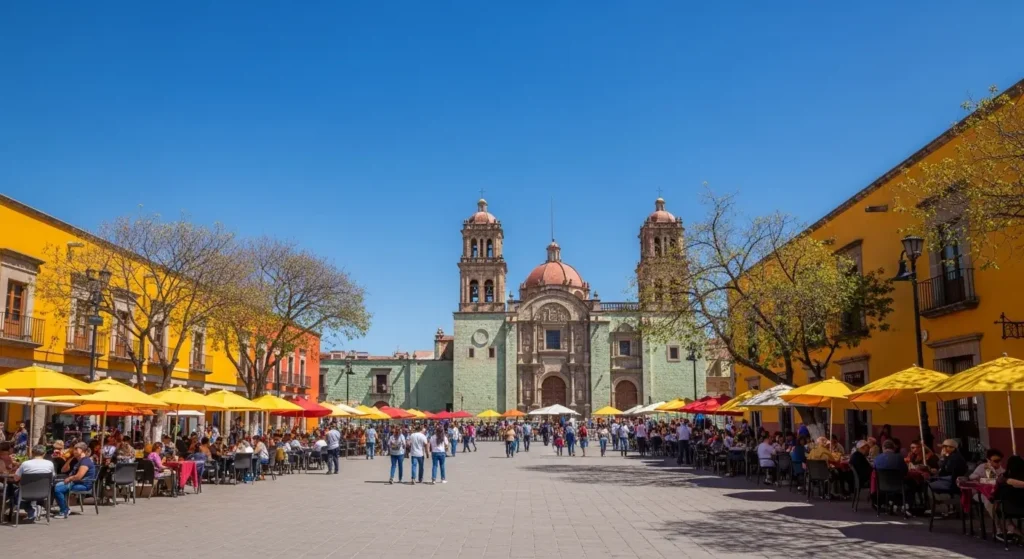
December through March sees the biggest crowds. If you don’t mind sharing Oaxaca with lots of other travelers and can book early, high season delivers reliable conditions.
Shoulder Season (April-May, October): The Sweet Spot
These months feel like Oaxaca’s secret—the ideal time for smart travelers.
The months of April and May extend the dry weather while crowds disappear. The zócalo becomes walkable again. Restaurants take walk-ins. Hotel prices drop significantly.
Markets overflow with seasonal fruits—mangoes, zapotes, tejocotes. Chefs get creative with spring ingredients.
Heat builds a bit by late May in Oaxaca. Afternoons get warm. But mornings and evenings stay comfortable.
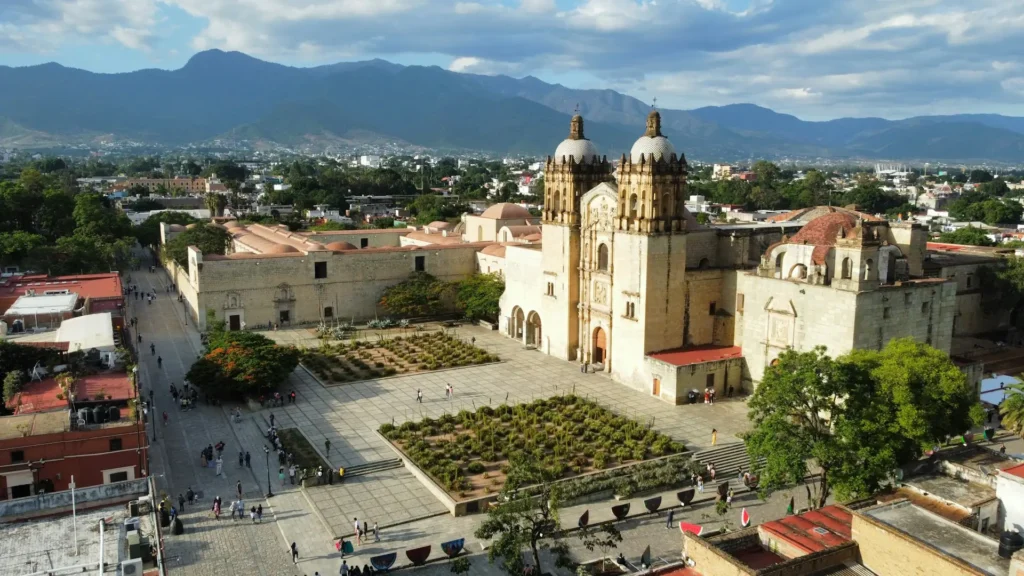
October shifts completely as Día de Muertos prep begins. Rain decreases—by mid-October, you might go days without showers. The first three weeks offer exceptional value: improving weather, cultural richness, reasonable prices, manageable crowds.
30+ Best Things to Do in Huatulco Oaxaca
Summer (June-August): Afternoon Rain, Empty Hotels
The summer months transform everything. June through August follows a predictable pattern. Clear mornings. Building clouds. Then rain around 3-4 PM. Downpours last one to two hours, then clear. Evenings often turn nice again.
The landscape transforms. Brown hillsides turn emerald green. Waterfalls run at full force. The air smells clean after afternoon showers.
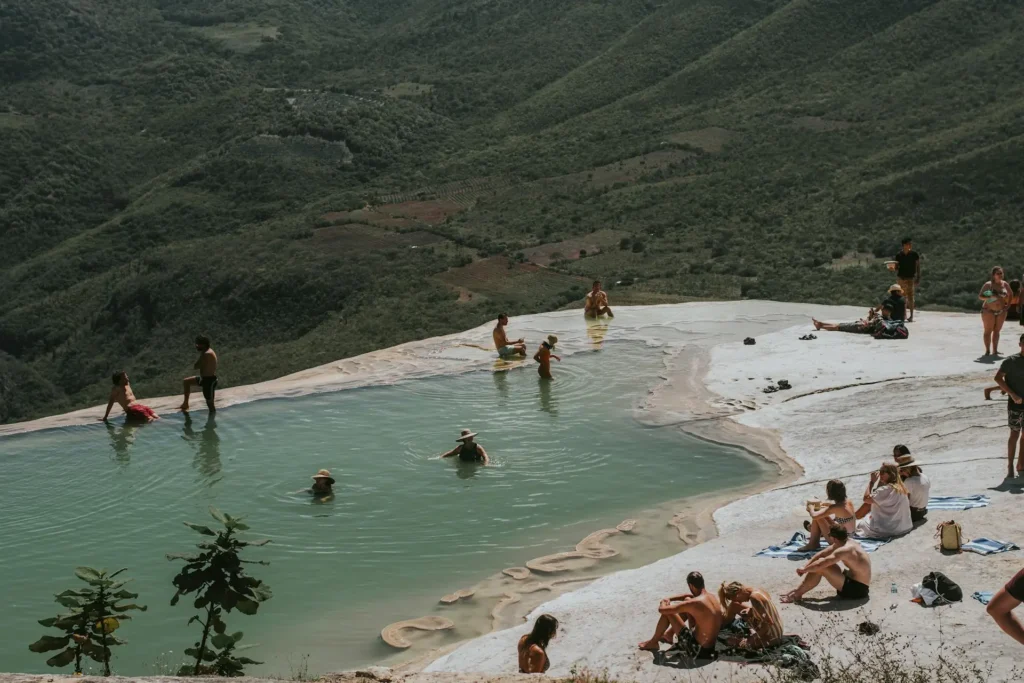
Tourist numbers plummet during these months. Hotels sit half-empty. Restaurants cater to locals. Prices drop 30-50%.
July stands apart with Guelaguetza—the July festival for the annual indigenous cultural celebration during the last two weeks. For Guelaguetza festival exact dates visit official Oaxaca tourism website.
August is the year’s quietest month and is considered low season.
Budget travelers love summer despite the rain. You can afford major upgrades and get genuine local experiences.
Fall (September): Rock-Bottom Prices
September continues rainy patterns, though less intense than July-August. This month sees the absolute lowest tourist numbers and prices—the cheapest time to visit Oaxaca.
Fewer tourists means more attention from artisans, guides, and restaurant staff. But heavy rains during some weeks make outdoor activities less reliable. Some businesses close briefly for vacations.
September works for hardcore budget travelers willing to plan around weather.
Best Times for Different Types of Travelers
For Budget Travelers: May and September Win
May delivers dry weather at low season prices. September offers rock-bottom rates in exchange for afternoon rain.
I’ve seen the same hotel room cost $150 in January and $70 in May. Same room, similar weather, half the price.
Use those savings to upgrade accommodations, try expensive restaurants, book cooking classes, or extend your trip.
May wins for weather reliability. September wins for absolute lowest pricing.
For Festival Seekers: Plan Strategically
Day of the Dead (October 31-November 2) draws travelers worldwide. Oaxaca celebrates it more authentically than anywhere else.
But logistics get difficult. Hotels book 6-12 months ahead. Prices triple. Streets overflow.
Only visit for Day of the Dead if this specific festival motivates your entire trip.

Guelaguetza (last two weeks of July) showcases indigenous traditions with less chaos than Day of the Dead. You can book 2-3 months ahead and find decent options.
Main performances happen under covered seating, so July’s afternoon showers don’t ruin things.
For Beach Lovers: November or April
November through April brings the best beach weather. Sunshine, warm temps, calm ocean.
December through March sees biggest crowds and premium rates at tourist areas.
Aim for November or April. You get excellent weather at lower prices with thinner crowds. These shoulder months deliver access to secluded beaches without the peak season madness.

Summer beach visits bring afternoon rain and humidity, but nearly empty beaches and massive discounts on oceanfront places. Surfers love that waves stay consistent throughout the months of the year.
10 Best Things to Do in Akumal Beach
What Actually Happens During Rainy Season
Rainy season (June-September) scares people unnecessarily. It doesn’t mean all-day downpours.
Here’s the typical pattern:
Morning starts clear and sunny. By mid-morning, you’re exploring markets under sunshine. Clouds build through early afternoon. Around 3-4 PM, rain arrives—sometimes gentle, sometimes afternoon thunderstorms. It lasts one to two hours. Then it clears. Evenings turn pleasant again.
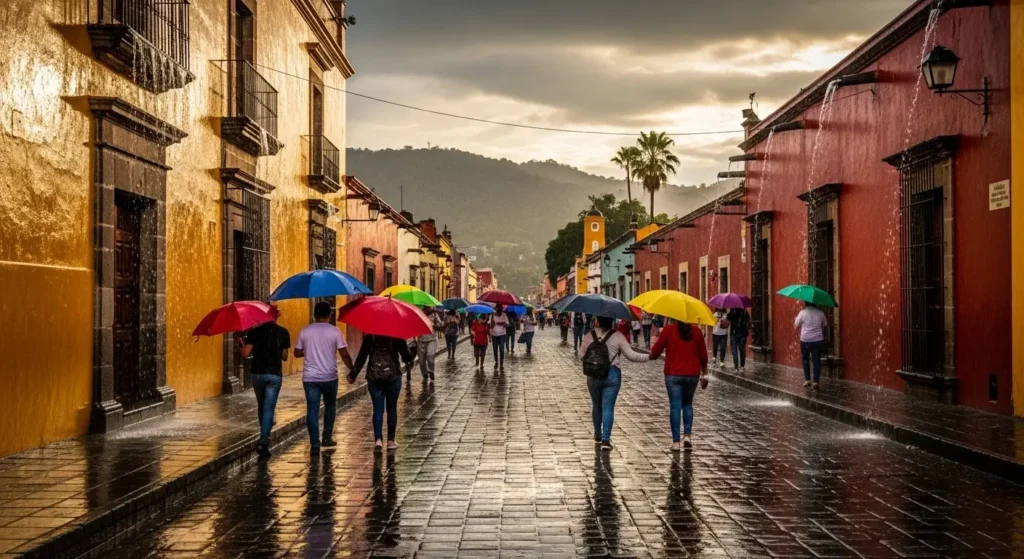
This repeats almost daily during July and August. June and September see showers 3-4 days weekly instead of daily. October rainfall decreases as wet season ends.
Plan around this: outdoor activities in mornings, indoor experiences (cooking classes, mezcal tastings at Casa Oaxaca, museums) for afternoons.
Rain transforms the landscape to lush green. Waterfalls run magnificently. Temps cool pleasantly. Plus, afternoon showers give you perfect excuses to try another café or mezcaleria.
What to Pack for Each Season
Here are the essential travel tips for packing throughout the year.
Year-Round Essentials
Comfortable walking shoes (cobblestones destroy feet). Sunscreen and hat (elevation intensifies UV rays). Reusable water bottle. Day pack.
Dry Season (November-April)
Pack layers. Nights get surprisingly cool, especially January-February. Bring a jacket for evenings. Long pants and closed-toe shoes work for evening dining. The dry air might need moisturizer and lip balm. Here, Official Oaxaca tourism website.
Rainy Season (June-September)
Compact umbrella or packable rain jacket. Quick-dry clothing (humidity prevents overnight drying). Waterproof bags for electronics.
Despite rain, light breathable fabrics work—you’re dealing with warm rain, not cold wetness.
Shoulder Seasons (April-May, October)
Most versatile packing needed. Shorts and t-shirts for warm afternoons. Light long-sleeve layer for cooler mornings and evenings.
For all seasons: Modest clothing for churches (cover shoulders and knees). One nice outfit for upscale dining—Oaxaca’s restaurant scene deserves it.
Hotel Pricing Reality Check
High season rates run 40-60% higher than low season. For example, that $80 May room becomes $140 in January at the same hotel.
Day of the Dead creates extreme pricing—some hotels triple rates for 31-October to 02-November. Others implement minimum night stays.
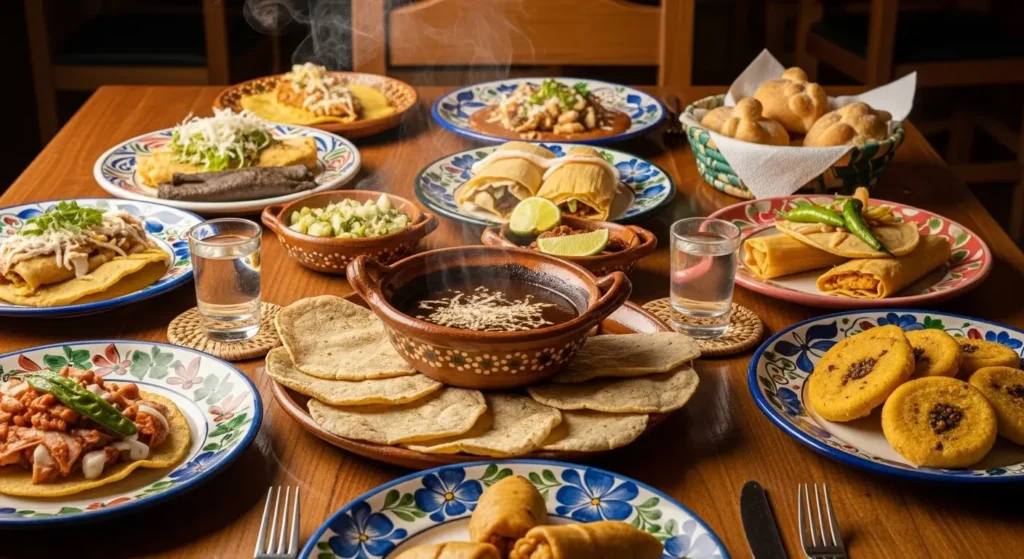
When to Book
- Day of the Dead: 5-6 months ahead
- Christmas/New Year: 3-4 months ahead
- Regular high season: 2-3 months ahead
- Shoulder season: 3-5 weeks ahead
- Low season: Can book days/weeks ahead
Pro tip: Arrive a few days before or after major holidays for better availability and rates.
Times You Should Probably Avoid
Day of the Dead Weekend (31-Oct to 02-Nov)
Worst time unless you’re specifically there for the festival. Everything needs advance reservations. Prices peak annually. The city becomes impossibly crowded.
Travelers arriving without planning face tough situations—hotels book solid, restaurants turn away walk-ins, even finding breakfast gets challenging.
Read more about Day of the dead
Late August/Early September
Combines wettest weather with lowest city energy. Many businesses close temporarily for vacations. Persistent rain makes outdoor activities unreliable.
Christmas Week (Dec 24-26)
Many businesses closed. Reduced public transportation. Premium hotel rates with minimum stays. The atmosphere differs from what most international travelers expect.
Combining City and Coast
November through April gives the best window for combining highland and coastal experiences. Both areas enjoy dry weather and comfortable conditions.
The journey between Oaxaca City and Puerto Escondido takes 6-7 hours by bus or 45 minutes by flight.
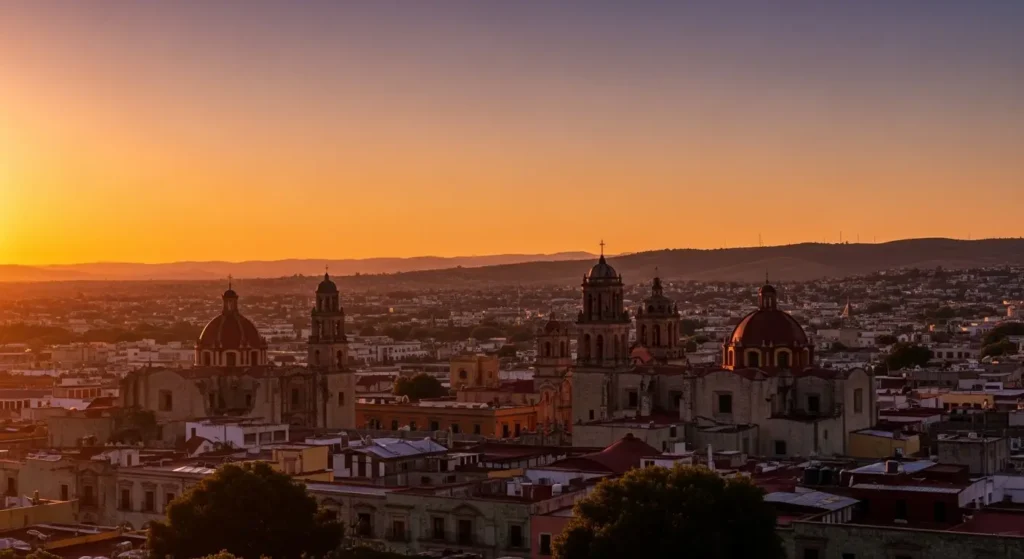
December through February represent peak season for both with higher prices and crowds. November and April offer better value while maintaining excellent weather.
Optimal split: 4-5 days in Oaxaca City for culture, then 3-4 days at the beach for relaxation. This allows thorough city exploration while giving you enough beach time to unwind.
Your Most Common Questions Answered
Does it rain a lot in Oaxaca?
Nope. Rainy season brings afternoon storms lasting 1-2 hours, not all-day downpours. Mornings stay clear for activities.
What is the Weather like in Oaxaca in May?
May temps reach low-to-mid 80s—warm but comfortable thanks to low humidity and elevation. Mornings and evenings stay pleasant.
How many days in Oaxaca is enough?
Most travelers find 4-5 days ideal for exploring markets, museums, ruins, and food. Adding 3-4 beach days creates a well-rounded week-long trip.
Is Oaxaca city safe for tourists?
Yes. Oaxaca maintains strong safety records. The city welcomes visitors throughout the year with standard travel precautions.
How far ahead should I book for Day of the Dead?
Book at least 6 months ahead, ideally 6-8 months for preferred places. Hotels near centro sell out a year ahead.
Does Oaxaca have good beaches?
Yes. Coastal areas stay warm throughout the year. November through April offers best beach weather. Summer brings afternoon rain but nearly empty beaches and significant savings.
My Final Take: When You Should Actually Go
After multiple visits across different months, here’s what I think.
The sweet spot for most travelers: April, May, or October. These months deliver everything that makes Oaxaca special without peak or low season compromises.
April through May gives the most reliable conditions. Dry weather extends from winter. Temps stay comfortable. The rainy season hasn’t started yet.
I personally love May. The city feels authentically itself. Locals have reclaimed their streets. Restaurants welcome walk-ins. Hotel staff remember names. The experience feels intimate, not transactional.
October holds different appeal. The improving weather signals wet season’s end. The city transforms as Day of the Dead approaches. Visitors during the first three weeks witness authentic cultural preparations. You see altars being built. Markets filling with marigolds and sugar skulls. You feel the building spiritual energy.
Winter months (December-February) work beautifully if you book early and accept premium rates. The guaranteed sunshine makes these months understandably popular. But the crowds represent real trade-offs.
Summer deserves consideration for adventurous, budget-focused travelers. The afternoon rain patterns stay predictable enough to plan around. The dramatically lower prices allow significant savings or upgrades.
Here’s the truth: Oaxaca is characterized by its authentic blend of culture and tradition. It’s Mexico’s cultural heart. Ancient traditions blend with contemporary creativity everywhere. Whether you arrive during the busiest week or quietest month, this remarkable place rewards visitors with unforgettable experiences.
Understanding seasonal patterns helps you maximize time and budget. But ultimately, time to travel to Oaxaca matters more than when exactly you go.
Pick timing that matches your priorities. Book accordingly. Pack right. Then surrender to whatever Oaxaca reveals. There are countless things to do in Oaxaca regardless of season—from exploring ruins and markets to sampling Oaxacan cuisine and mezcal.
The city has a way of surprising people regardless of season. The food always amazes. The artisan craftsmanship always impresses. The cultural depth always moves visitors.
Rain or shine. Crowded or empty. Expensive or cheap. Oaxaca delivers magic to those open to receiving it.
